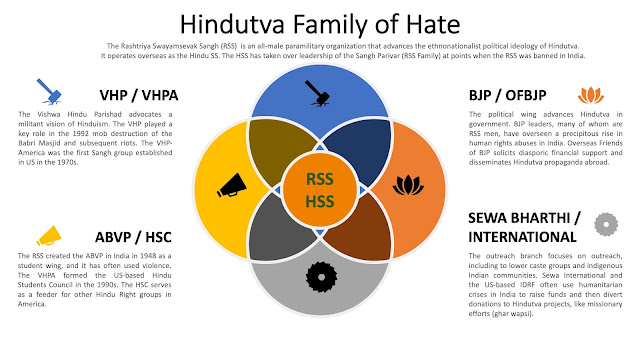New roads, an airport and a water reservoir in Tharparkar are opening up Pakistan's least developed region. Jobs are being created, drought-resistant nutritious trees and crops being planted and fish farms being established for the benefit of the the people of Thar. New water pond is attracting migratory birds that feed on fish.
 |
| Tharparkar Peacock |
Underground Water:
Fortunately for the people of Thar, Sindh Engro Coal Mining Company has discovered significant amount of underground water, the most precious commodity in drought-hit Tharparkar region of Pakistan. Syed Abul Fazal Rizvi, Chief Executive Officer (CEO) of SECMC and Thar Foundation was quoted by Business Recorder as saying, “While carrying out hydrogeological studies for Thar coal project, we found out abundant water reserves of groundwater at the depth of 450 plus feet in the whole of the desert region." The available water in Thar has the potential to irrigate thousands of acres of land by applying modern watering methods such as drip and sprinkler systems, he added.
Rizvi said in collaboration with Pakistan Agriculture Research Council (PARC) and Institute of Sustainable Halophyte Utilization of Karachi University, Thar Foundation has produced commercially viable amounts of Apple Ber, guava, dates, Rhodes Grass (for livestock feed), Castor (cooking) Oil, Cluster Bean (guar), and vegetables. Utilizing the underground saline water, the foundation has piloted a 40-acre plot of land to grow fruits, vegetables, and local grass species and established Sindh’s largest private sector nursery which nurtures 500,000 saplings at a time. It has also set up a 68-acre Green Park which has grown local species of trees that comprises Neem, Babur, Roheero, Kandi, Moringa, and other species.
Gorano Pond has begun to attract a lot of migratory birds that feed on fish. Some species, the report said, have even started nesting on the partly submerged tree tops, according to the Turkish Andolu News Agency.
Moringa Trees Fight Malnutrition:
Aga Khan University and Sindh Agriculture University are jointly promoting Moringa tree planting in Pakistan's Thar desert to fight malnutrition, according to multiple media reports. Moringa has gained popularity as superfood in the West in recent years. People of drought-stricken Tharparkar have been suffering from malnutrition and disease in the middle of a long-running drought in the region. Sindh Agriculture University, Tando Jam, and the Aga Khan University will plant 40,000 moringa tree seedlings in Matiari, a rural district in central Sindh, in an effort to improve the health of malnourished mothers, children and adolescents in the area. The moringa tree plantation campaign has been funded by the Prince Sadruddin Aga Khan Fund for the Environment, a $10 million fund dedicated to practical solutions to environmental problems.
Moringa tree packs 92 essential nutrients, 46 antioxidants, 36 anti-inflammatories and 18 amino acids which help your body heal and build muscle. Native to South Asia, the hardy and drought-resistant Moringa tree can contribute to everything from better vision and stronger immune system to healthier bones and skin. Moringa has 25 times more iron than spinach, 17 times more calcium than milk, 15 times more potassium than bananas and nine times more protein than yoghurt, according to Dr. Shahzad Basra of the University of Agriculture in Faisalabad, Pakistan. “It also has seven times more vitamin C compared to oranges, over 10 times more vitamin A compared to carrots and three times more vitamin E compared to almonds", he added. No wonder the powder made from Moringa leaves is sold as superfood in the West. Global market for Moringa products is estimated at $5 billion and growing at 8% CAGR.
Fish Production For Protein:
Dewatering operation of the deep aquifers underneath the coal deposits has discovered large amounts of water which has been removed and pumped into a lake called Gorano Pond. This has opened up organic fish farming in the region.
Gorano is 35 KMs south of the Islamkot Taulka where an artificial reservoir of 1500 Acres was established, according to Business Recorder. Dewatering started in April 2017 from SECMC coal mine and so far, 600 Acres of the reservoir have been filled with water. More than 100,000 fish-seedlings (3-4inches in size) were initially released and within 8-9 months with full grown fish reaching more than 1Kg in weight only on natural feed (Zooplanktons, Phytoplanktons, Algae and other marine insects available in Pond) and were declared fit for consumption by an external laboratory.
Jobs For Locals:
Sindh Engro Coal Mining Company (SECMC), the largest contractor working in Thar desert coal project, has committed itself to hiring locals wherever possible.
When SECMC launched its Female Dump Truck Driver Program near the town of Islamkot in Thar, Kiran Sadhwani, a female engineer, visited several villages to motivate women to apply for the job and empower themselves, according to
Express Tribune newspaper. “Not all women who are working as dumper drivers are poor or in dire need of money. It is just that they want to work and earn a living for themselves and improve the lives of their families,” she told the paper. SEMC is hiring 30 women truck drivers for its Thar projects, according to
Dawn newspaper.
Private Sector's Role in Thar:
Most of the
social sector improvement effort in Tharparkar is part of what is known as "
Corporate Social Responsibility" (CSR). It is led by Sindh Engro Coal Mining Co (SECMC), and the Thar Foundation, funded by SECMC. SECMC is joint venture of Engro Corporation (
Dawood Group) and Sindh government. The Thar Foundation is a special department under SECMC that serves as the CSR office of the Thar project, and handles all the CSR work in the entire Thar area on behalf of all the funding parties. Also helping out are Prince Sadruddin Aga Khan Fund & several universities in Sindh, including Karachi University, Aga Khan University and Tando Jam Agriculture University.




























